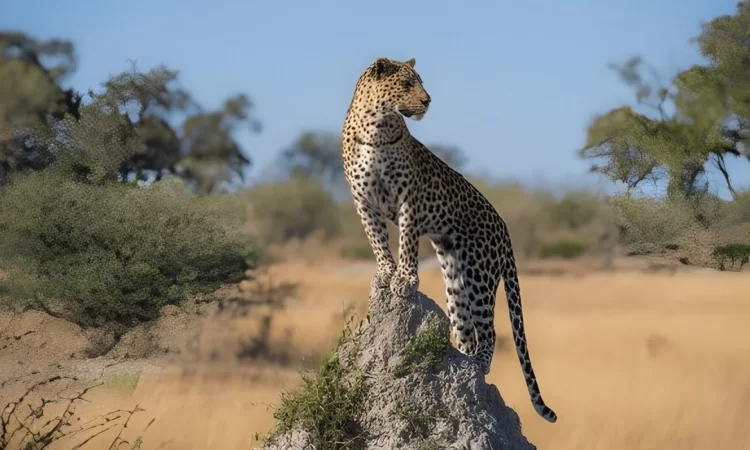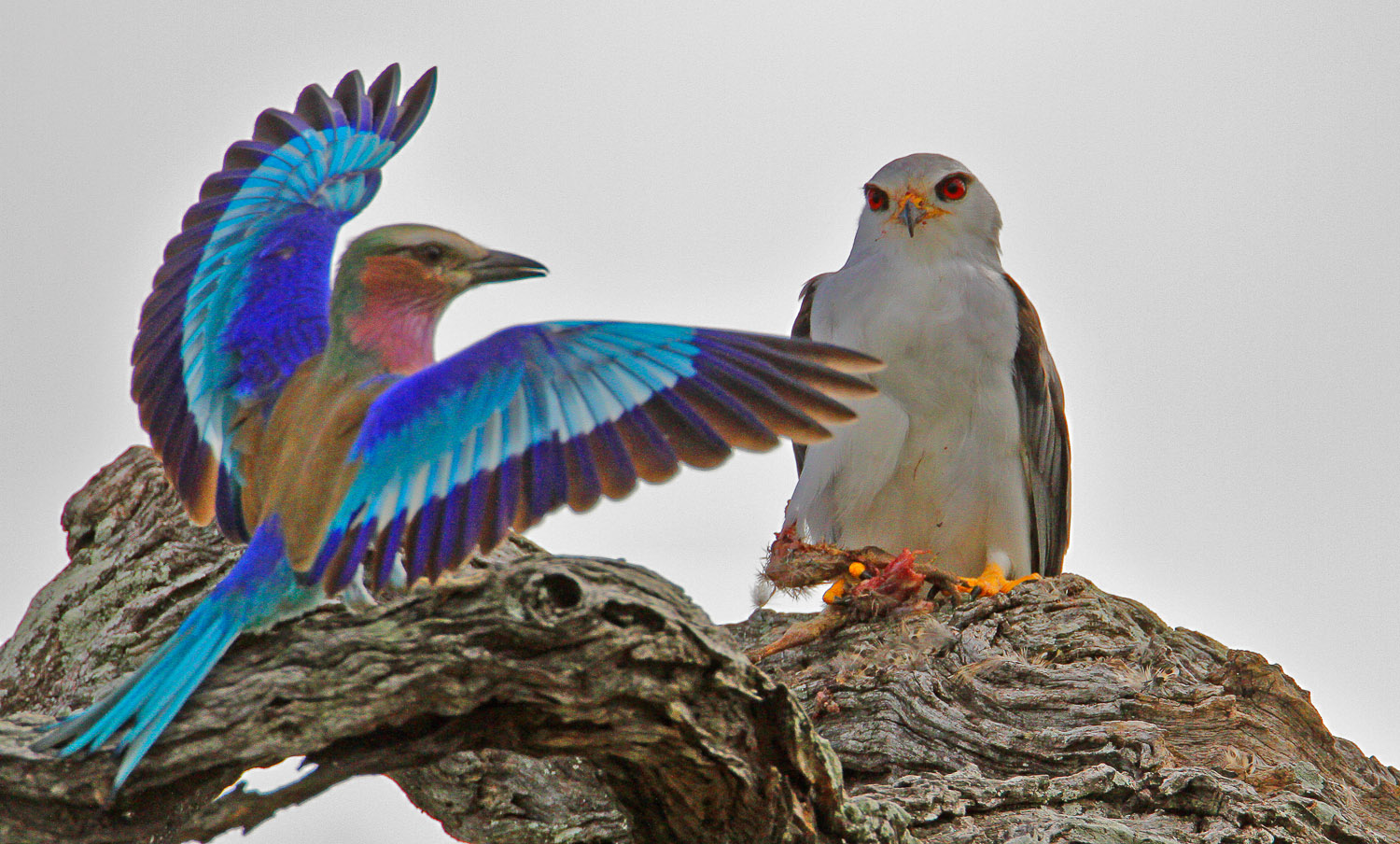Guide to Kruger National Park in 2026

Going on an African safari is a lifetime opportunity to witness magic unfold before you. The continent is home to top-notch wildlife sanctuaries, where wildlife thrives. South Africa is among the top destinations on the continent – a must-visit for wildlife lovers. The country’s richer wildlife and cultural diversity are one of a kind. For anyone dreaming of a perfect wildlife safari, Kruger National Park should be your first stop. In this article, we speak of the Kruger National Park, its accessibility, attractions, and all the experiences it offers. Let’s get right into it.
Kruger National Park lies northeast of South Africa. And of course, it’s the only park with the highest concentration of animals in South Africa. The park harbors diverse landscapes – from savanna grasslands and woodlands, and riverine forests, all jam-packed with wildlife. There are also several archaeological and historical sites within the park.
Kruger National Park’s history
Kruger National Park is the country’s oldest park and harbors a diverse wildlife. Established as Sabi Game Reserve in 1898, it was upgraded into a national park in 1926 by Peter Kruger, the then president of Transvaal.
Since then, it has had richer resident wildlife, making it the national well-known park for wildlife safari. It’s home to a large population rhino and wild dogs, which are extremely rare in most parts of Africa.
Attractions in Kruger National Park
- The Big Five
The first thing that makes Kruger National Park famous is its abundant and diverse wildlife. There’s plenty of wildlife here, including large game, small animals, birds, and insects. If the big 5 animals make your bucket list, you don’t have to skip them.
Coming face to face with the Big Five is exciting. That’s one of the experiences the Kruger has to offer. But what are the big five anyway? These have had a turbulent past. Back then, when trophy hunting was in a boom, the so-called elite trophy hunters came to Africa to hunt. And bringing down a large animal was a prized effort. Then, these five animals – lion, leopard, buffalo, rhino, and elephant happened to be not only difficult but also dangerous to kill. They were collectively called the Big Five.
In some countries, rhinos are missing or very rare, such that it can take days to spot one. Not in South Africa, the Kruger is home to both the white and black rhino. These prehistoric mammals have nothing to do with their color. The white was mistakenly named so from the Dutch word ‘wyd’ (wide), referring to its broader lips. The black rhino was named so to differentiate it from the white, or probably from its dark appearance after wallowing in the mud during sunny days.
The other animals making the list are remarkably abundant in the Kruger. Lions prefer open plains and often live in prides. Leopards, although abundant, may require some effort to spot because of their elusive nature. Buffalos are often spotted lurking in long grass in large herds. Elephants stay in matriarch-led herds of up to 100 individuals.
- Wildlife
Apart from the celebrated Big 5, the Kruger harbors plenty and diverse wildlife.
This allows guests and visitors to enjoy incomparable game viewing and photo shooting. But also, Kruger National Park teems with mammals, birds, reptiles, and amphibians of every kind.
You can encounter zebras, kudus, impalas, and elands grazing on the grass savannas, hippos and crocodiles laze in rivers and waterholes. Giraffes are also common here. Predators like cheetahs, wild dogs, and hyenas never stop stalking their prey.
- Birdlife
Kruger National Park is ahead of the game when it comes to birds. As many visitors focus on big games, birds always go unnoticed. But Kruger is among the top destinations for birding in Africa. It has a record of 500 species. There, you can watch eagles, raptors, hornbills, cranes, and so much more.
Things to do in Kruger National Park
As you go through it, you discover so many things to do in Kruger National Park. Indeed, you won’t be short on activities during your Kruger wildlife safari. Here, we share some exciting activities you should be doing on your trip to the Kruger National Park.
- Game drive
Every drive, every turn in the Kruger is unique. Mornings are always good for searching the Big Five. Big cats are out of their hideouts, basking in the sun. But you can also go for an afternoon game drive and catch up with the beasts grazing.
Kruger also offers guided night safaris. Here, you got watch the nocturnal animals like leopards, jackals, nightjars, owls, lions, and hyenas. If the sky is clear, you stop at a stargazing point to watch African blanket of stars.
- Guided bush walks
Head out on a short walk in the morning or afternoon and view the bush from another perspective. A nature walk is close to nature, and an armed ranger is there to protect you. The guide will teach you about different medicinal plants, get to know small creatures, and smell nature.
- Golfing
If you’re a golfer or planning to learn it sometime, you aren’t left. In Kruger, there is the Skukuza Golf Course. There, you can play golf, and because the course isn’t fenced, animals like hippos, wild dogs, and baboons can be your fans.
- Bird watching

As we mentioned earlier, Kruger National Park is a birder’s paradise. So, get yourself a good cam and a pair of binoculars and go for a drive or walk. You won’t regret being there. Enjoy the views of lilac-breasted rollers, colored kingfishers, martial eagles, and many others.
- Visiting the historical and cultural sites
Kruger has a lot to do with history. Within its borders are different archaeological and cultural heritage sites worth a trip. They show evidence of human life long ago. A good example is Thulamela Ruins in northern Kruger. The ruins date back to 1200 and 1600 AD, when Thulamela was a thriving kingdom trading ivory and gold.
The best time to visit Kruger National Park is.
You can definitely visit Kruger anytime and enjoy your time. Now that everybody wants that ideal time to enjoy safari with no weather interruption, the dry winter months (May through September) are always the best, because:
- The vegetation is thin, making wildlife viewing straightforward.
- The wildlife gathers around waterholes. You don’t have to drive very far to search for animals.
- There’s a low risk of malaria
On the downside, the dry winter season:
- Receives a high volume of visitors, making the park crowded.
- It is expensive due to competition for spots in lodges
If you wish to skip this season, but still make your safari rewarding, the rainy season (October – April) is better. It has fewer crowds and low prices and is great for birdwatching. But be ready for frequent rainfall.
How to get to Kruger National Park
Kruger National Park is remarkably accessible by air and road – you choose. It has three airports are serving it – Phalaborwa Airport in the north, Hoedspruit Eastgate Airport at the center, and Kruger Mpumalanga International Airport in the south. The Skukuza Airport is a small airport within the park.
You can get to these airports through a commercial flight or a private charter. It’s important to talk with your lodge staff about where you should land. Thinking of where to get rentals? They’re right there when you arrive at these three airports.
You can also get to Kruger National Park by driving. However, it’s a long journey – for instance the distances from Johannesburg, Pretoria, Durban, Bloemfontein, Port Elizabeth, and Cape Town are 420 km, 752 km, 834 km, 1,436 km, and 1,842 km respectively.
Accommodation in Kruger National Park.
Wondering where to stay while in Kruger? Worry not! There are plenty of options to choose from. The choice of where you’ll be staying depends on your budget, as there are budget, midrange, and luxury options.
- Luxury Accommodations Private Game Reserves
The main Kruger is surrounded by private game reserves, such as Sabi Sands, Timbavati, Manyeleti, Kapama, Thornybush, and Balule. Staying in a private game reserve is awesome because you’re exempt from rules like off-road driving.
Lodges and camps within these reserves offer 5-star accommodations, gourmet meals, and personalized services like a private chef, servant, professional babysitters, and so on. The only setback is that they’re expensive, not good for budget backpackers. Here are some of the high-end accommodations in each of the private game reserves.
Sabi Sands Game Reserve
- Singita Boulders Lodge
- Londolozi Private Granite Suites
Timbavati Private Nature Reserve
- Tanda Tula Safari Camp
- RockFig Safari Lodge
Manyeleti Game Reserve
- Tintswalo Safari Lodge
- Honeyguide Mantobeni Camp
Kapama Private Game Reserve
- Kapama Karula
- Kapama Southern Camp
Thornybush Game Reserve
- Royal Malewane
- Thornybush Game Lodge
Balule Nature Reserve
- Pondoro Game Lodge
- Greenfire Game Lodge
- Rest Camps
These include cottages and rest houses near or within the Kruger National Park. Here, you enjoy an authentic safari experience at a low cost. The downside of these accommodations is that they’re always crowded. Popular rest camps include Lower Sabie, Satara, Crocodile Bridge, Punda Maria, Mopani, and Olifants.
- Basic Camping
Kruger also offers back-to-nature campsites with basic amenities like shared kitchen, toilet, and a bathroom. There are no fences, so expect animals as your visitors. A fully equipped ranger defends the campsite. Tsenze Rustic Campsite in the north of the park is a good example.
Is Kruger on your bucket list? It’s time to tick it off. Embark on a life-changing journey to seek out the Big Five, birds, and many other animals. If you still need more information about this park, give us a call. Our assistants are waiting for your call.


